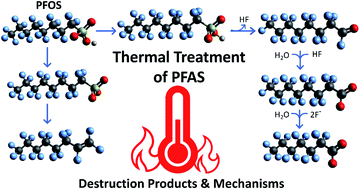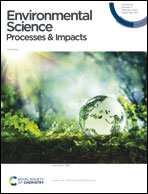PFAS fate and destruction mechanisms during thermal treatment: a comprehensive review
Abstract
Per- and polyfluoroalkyl substances (PFAS) are persistent chemicals and have been detected throughout the environment. Thermal treatment is the most common remediation approach for PFAS-contaminated solid wastes. Although various thermal treatment techniques have demonstrated the potential to destruct PFAS, the fate of PFAS, removal efficacy, potential emissions, and the formation of incomplete combustion products during thermal treatment are little known. This study provides a critical review on the behavior of PFAS based on different types of thermal treatment technologies with various PFAS-impacted environmental medias that include water, soil, sewage sludge, pure PFAS materials, and other PFAS-containing wastes. Different extents of PFAS thermal destruction are observed across various thermal treatment techniques and operating conditions. PFAS removal and destruction efficiencies rely heavily on PFAS structures, the complex combustion chemistry, the presence or absence of oxygen, temperature, and other operational conditions. This review also covers proposed PFAS thermal destruction mechanisms. Different thermal destruction mechanisms for perfluorooctanoic acid (PFOA) and perfluorooctanesulfonate (PFOS), and other PFAS are reviewed and compared. The majority of studies about PFAS thermal destruction mechanisms were focused on a specific list of PFAS and based mostly on the pyrolysis treatment. The basic pathway for PFAS destruction during pyrolysis is hydrodefluorination, which could be largely influenced by the alkaline condition. Future field-scale research that involves the characterization of PFAS destruction products and incomplete combustion products is needed to address public concerns and better emission control.

- This article is part of the themed collections: PFAS: cleaning up drinking water and Best Papers 2022 – Environmental Science: Processes & Impacts


 Please wait while we load your content...
Please wait while we load your content...